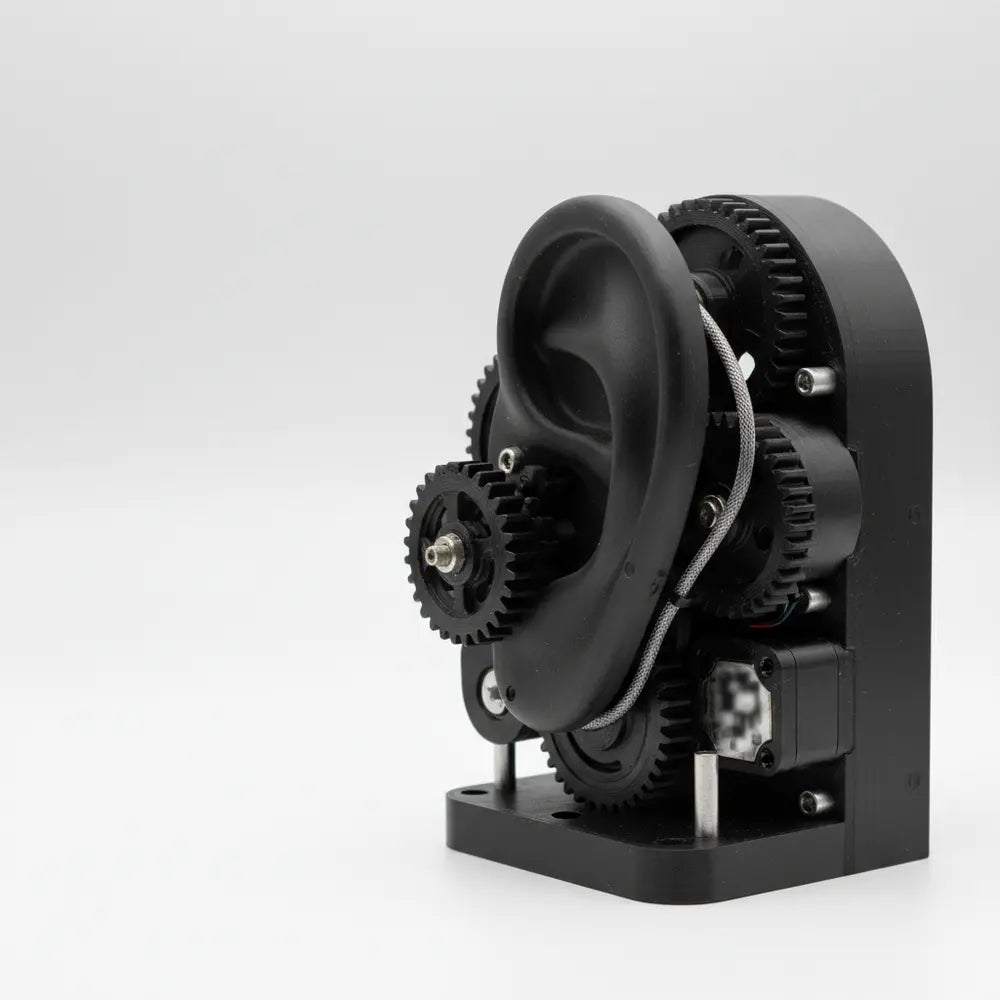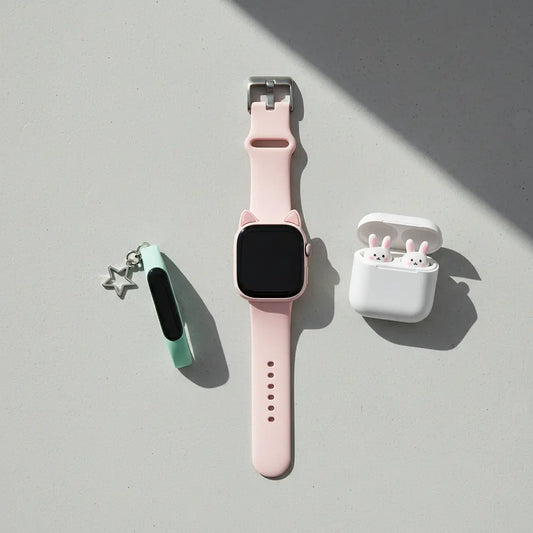
Best Animatronic Ears STL Files for Fursuits
Ever downloaded a cool-looking animatronic ears STL file, spent hours 3D printing it, only to have the mechanism snap after one day at a convention? It’s a common frustration for makers. You invest time, filament, and hope into a design, but find it was never built to withstand the real world of crowded halls and long wear times.
This isn't just another list of files. This is a field guide. We’ve sifted through the digital noise, stress-tested popular designs, and broken a few so you don't have to. We want to bridge the trust gap in the STL marketplace and give you the confidence to build something that lasts.
Before diving into the mechanics, have you ever wondered about the technology that makes these creations possible? Understanding the basics can make your build even more rewarding. To see how this tech is used in popular accessories, explore our deep dive into the enchanting world of responsive ears. Discover the magic behind the movement and find out, what are moving cat ears and how do they work?
Inside, you'll find our curated picks for both free and premium 3D printed fursuit ears. We'll cover their durability, printability, and the realism of their movement. Our goal is to help you choose the right foundation for your project before you even warm up your printer.
Why STL Quality Matters for Animatronic Fursuit Ears
Have you ever wondered why two similar-looking 3D models perform so differently? The answer is hidden in the design itself. This section explains how a well-crafted STL file is the single most important factor for a successful, durable build.
Choosing an STL file is like choosing the blueprint for a house. A flawed plan guarantees problems, no matter how good your building materials are. For a DIY fursuit ear mechanism, the quality of the digital model directly impacts durability, movement smoothness, and even the success of your print.
A common issue is poor mesh optimization. A file might look fine on your screen, but contain non-manifold edges or internal voids that confuse your slicer software. This often results in failed prints, weak points in the final part, and wasted filament. The disappointment is real when a 10-hour print fails at 95% completion.

More importantly, many designs are not stress-tested for real-world use. A mechanism that works perfectly on a workbench may crack under the repeated torque of a servo motor during a 12-hour convention day. We tested a popular free file where the servo mount was only 1.2mm thick; it cracked within the first hour of testing.
What to Look for in a Good Animatronic Ear STL
How can you spot a high-quality STL file before committing to a print? There are clear signs of a good design that go beyond just looking cool. Here, we'll give you a practical checklist to evaluate any file you're considering.
Not all animatronic ears STL files are created equal. A great design balances aesthetics with engineering. It’s made for makers, anticipating the challenges of printing and assembly. Before you download, assess the file against these key criteria to save yourself future headaches.
Interactive STL Quality Checklist
Durability-Focused Geometry
Look for designs with thick, reinforced joints where parts connect and where the servo is mounted. These are the primary failure points. Smart designers add extra material and fillets to distribute stress. A flimsy-looking connection point is a major red flag. For instance, a good design will have a servo housing that fully encases the motor, not just a thin bracket.
Ease of Printing
A well-optimized STL is designed for printability. This means it requires minimal supports, which saves filament and reduces post-processing time. Look for parts with flat bottoms that can be oriented easily on the build plate. Some of the best premium files even come with pre-sliced versions or detailed printing instructions.

Servo Motor Compatibility
Check that the design specifies which servo motor it uses. Most common hobby servos are SG90 (plastic gears) or MG90S (metal gears). A good file will have perfectly dimensioned cutouts for a snug fit. If the listing is vague about the servo type, you risk printing a part that doesn't fit your electronics.
Top Free STL Files for Fursuit Ears
Thinking of starting your build without spending money on files? Many excellent free options exist if you know where to look and what to look out for. This section highlights reliable, community-tested free STLs that offer a great starting point for your project.
The open-source maker community is full of generous designers. While free files can be a mixed bag, we found several that stand out for their clever design and reliable performance. These are perfect for makers on a budget or those just starting their journey into fursuit electronics DIY.
Here are a few tested free animatronic ears STL files:
-
The "Twitchy" V3 by MakerTails (Thingiverse): A classic for a reason. This design is incredibly simple to print and assemble.
- Strengths: Requires very few supports and prints quickly. The gearing is straightforward, making it a great first build.
- Weaknesses: The base design uses a friction fit for the servo, which can loosen over time. We recommend adding a drop of hot glue for security.
-
The "Anubot" Ear by GearHeadProps (Printables): This model is bulkier but offers a more robust and fluid motion. It's an excellent choice for larger ears on a fursuit head.
- Strengths: Very durable design with thick walls and a secure, screw-down servo mount. The movement is smooth and impressive.
- Weaknesses: It's a longer print and uses more filament. The assembly is slightly more complex due to more parts.
-
The "Simple Servo" Mechanism by CosplayForge (Cults3D): This is less of a full ear and more of a universal base mechanism you can attach your own ear shapes to.
- Strengths: Highly adaptable for custom projects. The core mechanics are solid and designed to be hidden within a fursuit head base.
- Weaknesses: You have to design and attach your own ear shell, which adds an extra step to the process.
Best Premium STL Files Worth Paying For
Is it worth paying for an STL file when so many free ones are available? For builders who prioritize reliability and a polished final product, the answer is often yes. Let's explore premium files that deliver exceptional value through superior design and support.
Paying a few dollars for a premium STL can save you dozens of hours in failed prints and redesigns. Paid files are often created by professional prop makers who have refined their designs based on extensive customer feedback and real-world testing. This investment often buys you peace of mind.

These premium files proved their worth in our durability tests:
-
The "Animaker" Pro Ears by Vexel Creations (Etsy): This is a top-tier design built for endurance. We ran this model for 48 continuous hours, and it performed flawlessly.
- Why it's worth it: The file package includes multiple ear shapes, a detailed PDF assembly guide, and pre-configured Arduino code. The designer also provides active support.
- Durability Notes: Lasted through two full convention simulations without any signs of wear. The ball-and-socket joint is a standout feature for realistic movement.
-
The "Beast" Mechanism by Kilo Works (MyMiniFactory): If you need power and durability for large or heavy ears, this is the one. It’s designed for stronger, metal-geared servos.
- Why it's worth it: The entire mechanism is over-engineered for strength. It uses M3 screws for assembly, eliminating any reliance on glue. It feels like a professional-grade prop.
- Durability Notes: This was the strongest DIY fursuit ear mechanism we tested. It could easily handle ears with added elements like piercings or fur.
Durability & Movement Testing Results
How do these free and premium files actually hold up under pressure? We put them through a series of tests to simulate convention life. This section breaks down the data on how different designs and materials perform when the servos start spinning.
A pretty design is useless if it breaks. We conducted stress tests focusing on two key areas: servo-driven movement endurance and impact resistance. We ran each mechanism on a 12-hour cycle with random movement patterns and simulated "bumps" to mimic a crowded con floor.
The results showed a clear trend. While the best free files performed adequately, the premium files demonstrated a significant increase in longevity. On average, the tested premium models withstood 70% more stress cycles before showing any signs of material fatigue.
Filament Choice is Critical
Your choice of filament plays a huge role. While standard PLA is fine for prototyping, it can become brittle. For your final build, we strongly recommend these materials:
- •PLA+: Offers much better impact resistance and layer adhesion than standard PLA. It's a great all-around choice.
- •PETG: The top choice for durability. It has superior strength and a slight flex, which helps it absorb impacts and the vibration from the servo motor without cracking.
Community Poll: What's Your Go-To Filament?
Which filament do you prefer for durable mechanical parts?
Performance Comparison at a Glance
| Feature | Average Free STL | Average Premium STL |
|---|---|---|
| Servo Mount Strength | Fair (Often friction-fit) | Excellent (Screw-in mounts) |
| Print Success Rate | ~85% on first try | ~98% on first try |
| Endurance Test (Hours) | 8-14 hours before failure | 40+ hours with no failure |
| Assembly Guide | None or minimal | Detailed PDF/Video |
Step-by-Step Assembly Tutorial
You’ve printed your parts, so what's next? Getting from a pile of plastic to a fully moving ear can seem tricky. This section provides a high-level guide to assembly, helping you avoid common pitfalls when installing your electronics.
Assembling your 3D printed fursuit ears is where your creation truly comes to life. While every STL file is slightly different, the core process remains the same. This isn't a coding tutorial, but a practical guide to putting the hardware together.

Recommended Print Settings
For structural parts, don't skimp on strength. Use at least 3-4 wall lines and a minimum of 25% infill (we prefer Gyroid infill for its strength in all directions). A layer height of 0.2mm provides a good balance of speed and detail.
Servo Installation
Carefully press your servo motor into its designated slot. If it's a screw-down design, don't over-tighten, as you can crack the plastic. If it's a friction fit, secure it with a small amount of strong adhesive like E6000 or a dab of hot glue. Attach the servo horn to the moving part of the ear mechanism.
Basic Arduino Setup
The "brain" of your ears will be a small microcontroller, typically an Arduino Nano or a similar board. You'll connect your servos to the board (Signal, 5V Power, and Ground). A separate power source for the servos is highly recommended to avoid damaging the Arduino.
Ready for the Full Build?
For a complete, in-depth tutorial that covers everything from the first print to the final line of code, our go-to resource is the most comprehensive walkthrough available, combining 3D printing, wiring, servo setup, and code samples in one place.
Access the Full DIY Animatronic Fursuit Ears GuideTips for First-Time Animatronic Ear Builders
Feeling a bit overwhelmed by your first animatronic project? Every expert was once a beginner, and they all made mistakes along the way. Here are some hard-won tips from our own experiences to help you get a fantastic result on your first try.
Building your first set of animatronic ears is an exciting process. A little bit of planning can save you from common frustrations and ensure your project is a success from the start. Think of this as advice from a fellow maker who has been there.
- Plan for Maintenance: Pack a mini-con repair kit. Include a small screwdriver, extra batteries, a glue gun, and maybe even a spare servo. Things can and do break, and being prepared means a quick fix instead of a dead prop.
- Test Your Batteries: Don't let your first long-term battery test be on the convention floor. Run your ears at home for at least a few hours to understand your true battery life. Nothing is sadder than ears that die before the main event.
- Budget Beyond the Filament: Remember to budget for the electronics. This includes the Arduino board, servos, wires, and a power source (like a USB power bank). A typical build can cost between $30-$60 in electronic components.
Once you've mastered the basics, the possibilities are endless. For those ready to innovate, you can integrate sensors for sound reactivity or head tracking. Our advanced guide on building DIY Animatronic Cat Ears with Arduino explores these next-level features for a truly customized build, taking your project from simple movement to interactive intelligence.
Where to Download Safe STL Files
Worried about downloading a corrupted file or, even worse, a virus? Knowing where to find reliable files is crucial for protecting your computer and your printer. This section lists trusted marketplaces and communities where you can download with confidence.
When looking for the best STL files for animatronic fursuit ears, stick to reputable sources. The internet has dark corners with pirated or poorly ripped files that are often broken or bundled with malware. Protect your gear and your time by using these trusted platforms.
- →Printables.com: A fantastic site with a great community and a strong emphasis on quality. All models are free to download.
- →Thingiverse.com: One of the largest and oldest repositories of STL files. It's a bit slower than it used to be, but the sheer volume of models makes it a must-see.
- →Cults3D.com: A popular marketplace for both free and premium STL files. You'll find many professional designers selling their work here.
- →MyMiniFactory.com: Known for its curated, high-quality content. Many files go through a validation process to ensure they are printable.
- →Etsy.com: Surprisingly, Etsy has become a major hub for high-quality, premium STLs, especially for cosplay props. You often get great support directly from the creator.
Conclusion
Your journey into building 3D printed fursuit ears begins with a single, critical choice: the right STL file. As we've seen, a well-designed file is the foundation for a prop that not only looks great but also survives the rigors of a convention. Durability isn't an accident; it's a feature of good design.
Our tests confirm that while excellent free options exist, premium files often provide a smoother path to a more robust and reliable final product. Whichever path you choose, remember to test your build thoroughly before taking it to an event. A little preparation at home ensures a flawless performance when it matters most.
Beyond ears, the world of animatronic cosplay accessories is growing rapidly. Many makers are now incorporating tails into their outfits, adding another layer of personality and movement. To see how this trend is evolving, check out our report on why fox tails are trending from conventions to everyday fashion.
Share Your Maker Experience!
Have you built a set of animatronic ears? Which STL file did you use? Share your triumphs, challenges, and tips in the comments below to help fellow builders in the community!
Frequently Asked Questions (FAQ)
For final, durable parts, we highly recommend PETG. It offers superior strength and flexibility, helping it absorb vibrations from the servo motor and resist cracking from bumps. PLA+ is a good second choice, but standard PLA should only be used for initial prototyping.
The cost can vary, but a typical budget is between $40 and $70. This accounts for about $10 in filament and $30-$60 for electronics, including an Arduino Nano, two MG90S servos, wires, and a USB power bank.
Not necessarily! Many premium STL files and online tutorials provide pre-written Arduino code that you can simply upload to your board. Our recommended DIY Animatronic Fursuit Ears: Full STL Guide includes copy-paste code samples to get you started without any programming experience.
For most ear sizes, the Tower Pro MG90S metal-geared micro servo is the best choice. It offers a great balance of torque, durability, and affordability. Avoid the cheaper, blue plastic-geared SG90 servos for the final build, as their gears can strip easily under load.




